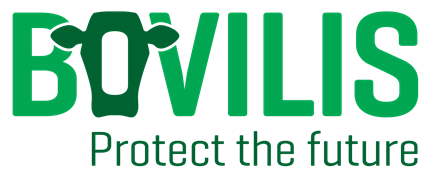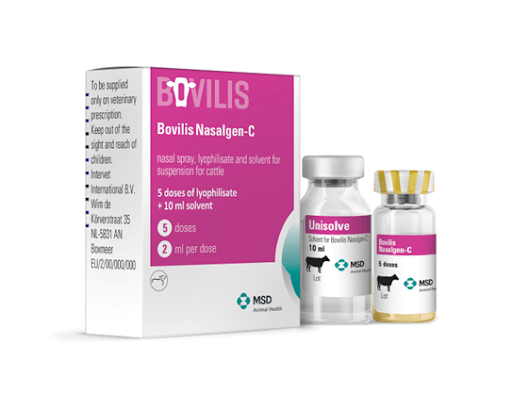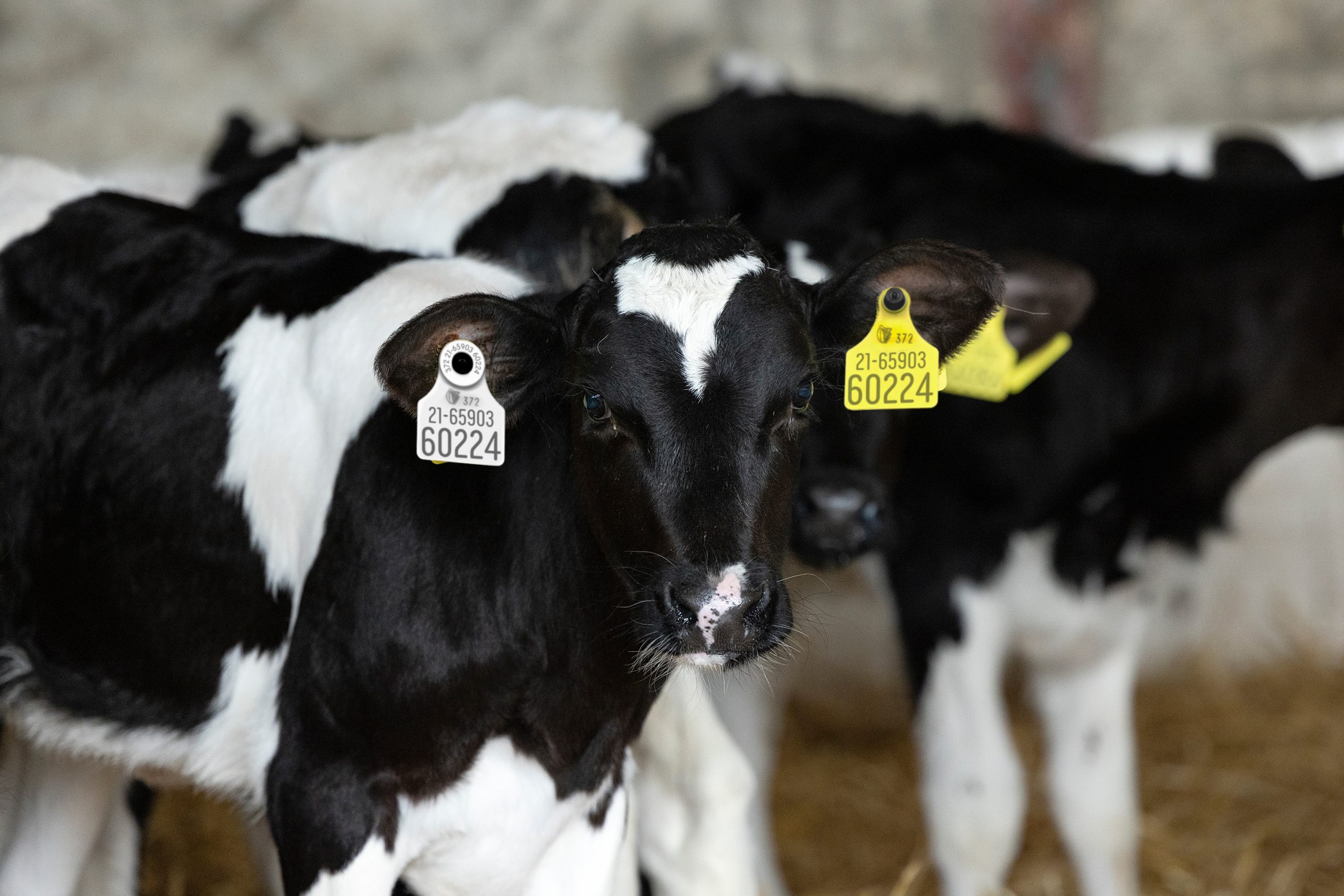

Bovine Coronavirus (BCoV)
Bovilis Nasalgen-C
Bovine Coronavirus (BCoV)
Bovine coronavirus is associated with three distinct clinical syndromes; neonatal calf diarrhoea (NCD), more commonly referred to as calf scour, winter dysentery and bovine respiratory disease (BRD). NCD, caused by coronavirus, is less frequently diagnosed in the Republic of Ireland in the past few years, while rotavirus and cryptosporidia remain the most common causes of calf scour1. Winter dysentery affects adult cattle who present with multiple clinical signs including diarrhoea, fever and reduced milk production.
Bovine Respiratory Disease (BRD)
BRD is an umbrella term of which pneumonia is one syndrome. Clinical signs of BRD caused by BCoV can vary from mild to severe which is dependent on multiple factors such as host immunity and viral load exposure. Animals infected with BCoV can present with a fever, nasal and ocular discharge, non-productive cough, increased respiratory rate, lethargy and reduced feed intake. Animals infected with respiratory BCoV can shed the virus for 3-8 days. Bovine respiratory coronavirus can affect dairy, suckler and beef herds. BCoV is transmitted directly by faecal-oral and respiratory routes. The virus is classically transmitted from dam-to-calf and calf-to-calf.

Recent research in Ireland demonstrated that BCoV was identified in the respiratory tract on 57% of tested farms by PCR2. In another study, BCoV represented the most frequently detected partner virus in BRD in respiratory outbreaks in calves less than 3 weeks of age3. BCoV most commonly achieves significance as a cause of BRD when acting with other viruses, for example RSV and PI3, and bacteria, for example Mannheimia haemolytica and Mycoplasma bovis. These concurrent infections (more than one infectious agent involved) can result in more severe clinical outcomes and potentially more mortalities.
How do you establish if BCoV is a causative agent in BRD cases on your farm?
Diagnostics are required as clinical signs are non-specific to BCoV. It is important to engage with your veterinary practitioner to carry out diagnostic testing.
Your veterinary practitioner can perform nasal swabs, lung washes and/or serology preferably from fresh, early and untreated BRD cases.
While animals who succumbed to disease should ideally be sent for post-mortem as soon as possible (note BCoV is demonstrated more frequently in live animals compared to post mortem4).
Control Measures
It is important to implement control measures to prevent BRD as there are not only substantial economic implications of BRD but also respiratory disease is the most significant cause of death in cattle, greater than 1 month of age in Ireland, each year.

BRD negatively impacts milk production by 525L in the first lactation5 while beef cattle with obvious clinical signs of BRD can take 59 days longer to finish6.
What control measures should you implement to prevent bovine respiratory coronavirus?
Controlling disease involves a multifaceted approach incorporating management, housing, biosecurity, hygiene and vaccination. Vaccination plays a vital role in protecting against BCoV.
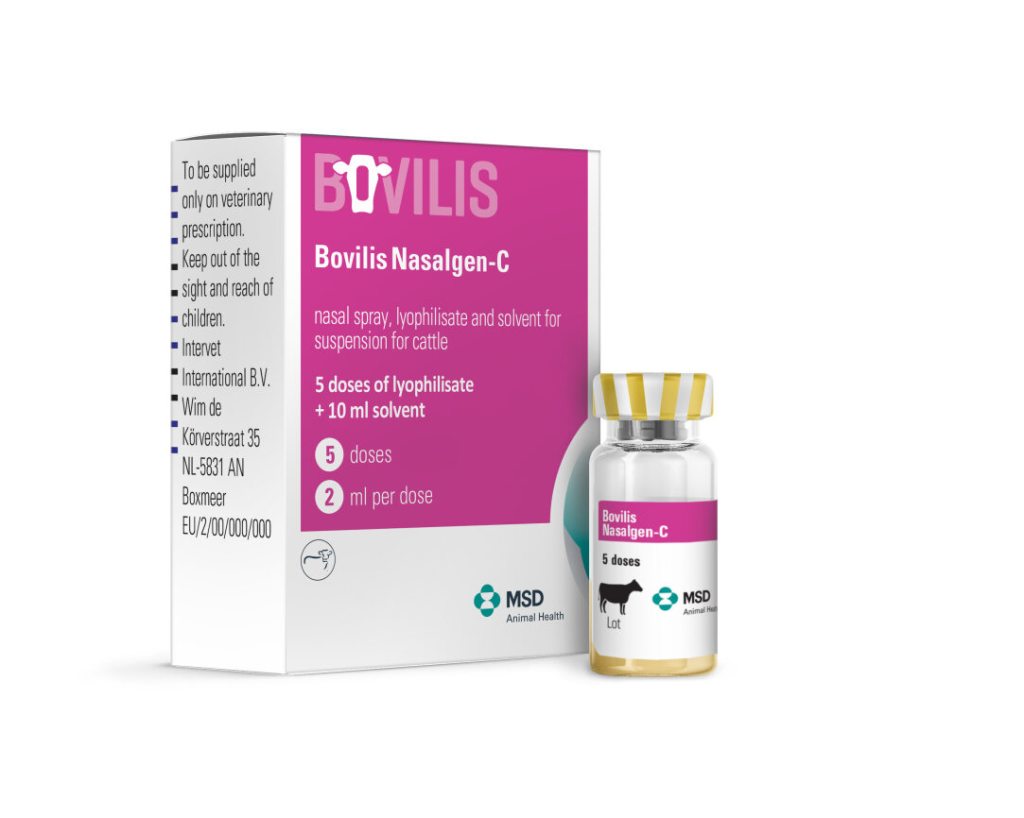
MSD Animal Health has recently introduced the first and only respiratory bovine coronavirus vaccine. Bovilis Nasalgen-C is a live attenuated vaccine which is licensed for administration from the day of birth intranasally.
References
- All- Island Animal Disease Surveillance Report, 2021. Department of Agriculture, Food and Marine of Ireland, Agri-Food and Bioscience Institute and, Animal Health Ireland.
- Berge A.C. and Vertenten G. Prevalence, biosecurity and risk management of coronavirus infections on dairy farms in Europe. World Buiatrics Congress, Madrid, Spain (2022)
- O’Neill R, Mooney J, Connaghan E, Furphy C and Graham D.A. Patterns of detection of respiratory viruses in nasal swabs from calves in Ireland: a retrospective study. Veterinary Record (2014) 11;175(14):351
- O’Neill, R et al., Bovine Respiratory Coronaviruses detections in Ireland – Twelve years of trends and patterns, International Conference on Livestock, Companion Animals and Wildlife Coronaviruses (2023)
- Dunn, T.R., et al. The effect of lung consolidation, as determined by ultrasonography on first lactation milk production in Holstein dairy calves, Journal of Dairy Science (2018) 101:1-7
- Bareille, N., et al. Impact of respiratory disorders in young bulls during their fattening period on performance and profitability. Renc Rech Ruminants (2008) 15
Product Focus
Related Video
To activate the video player please allow cookies in category ‘Performance and Operation’ and refresh this page.
Related Articles
- Technology for Profit competition #TimeForTech
 We’re looking for Irelands most innovative dairy farmers! #TimeforTech Following the success of our Prevention for Profit campaign we’re excited to launch the “Technology for Profit” competition for 2025.
We’re looking for Irelands most innovative dairy farmers! #TimeforTech Following the success of our Prevention for Profit campaign we’re excited to launch the “Technology for Profit” competition for 2025. - Flies – Nuisance by name, nuisance by nature
 With temperatures slowly on the rise, next on the agenda – fly season. Impact on production and spread of disease Anyone who has worked with cattle during the summer months needs little reminding of the annoyance which flies can cause. They can be responsible for a state of unrest in the parlour for both cows … Read more
With temperatures slowly on the rise, next on the agenda – fly season. Impact on production and spread of disease Anyone who has worked with cattle during the summer months needs little reminding of the annoyance which flies can cause. They can be responsible for a state of unrest in the parlour for both cows … Read more - Reducing Abortion Rates in Your Flock: Enzootic Abortion of Ewes and Toxoplasmosis
 Eleanor Brady, MVB MRCVS, Ruminant Veterinary Manager, MSD Animal Health Many Irish flocks will experience a few abortions each year, but how many abortions is too many? Targets for abortion and overall empty rate are set at <2% and <5% respectively, although many flock owners accept rates higher than this. Approximately one third of lamb … Read more
Eleanor Brady, MVB MRCVS, Ruminant Veterinary Manager, MSD Animal Health Many Irish flocks will experience a few abortions each year, but how many abortions is too many? Targets for abortion and overall empty rate are set at <2% and <5% respectively, although many flock owners accept rates higher than this. Approximately one third of lamb … Read more
Sign up to Bovilis® product and event information
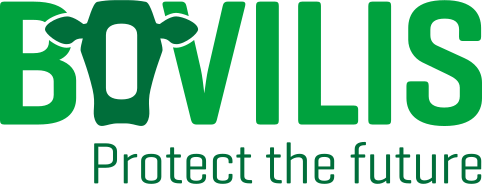
MSD Animal Health
Red Oak North, South County Business Park, Leopardstown,
Dublin 18, Ireland
vet-support.ie@msd.com
PHONE
CATTLE DISEASES
